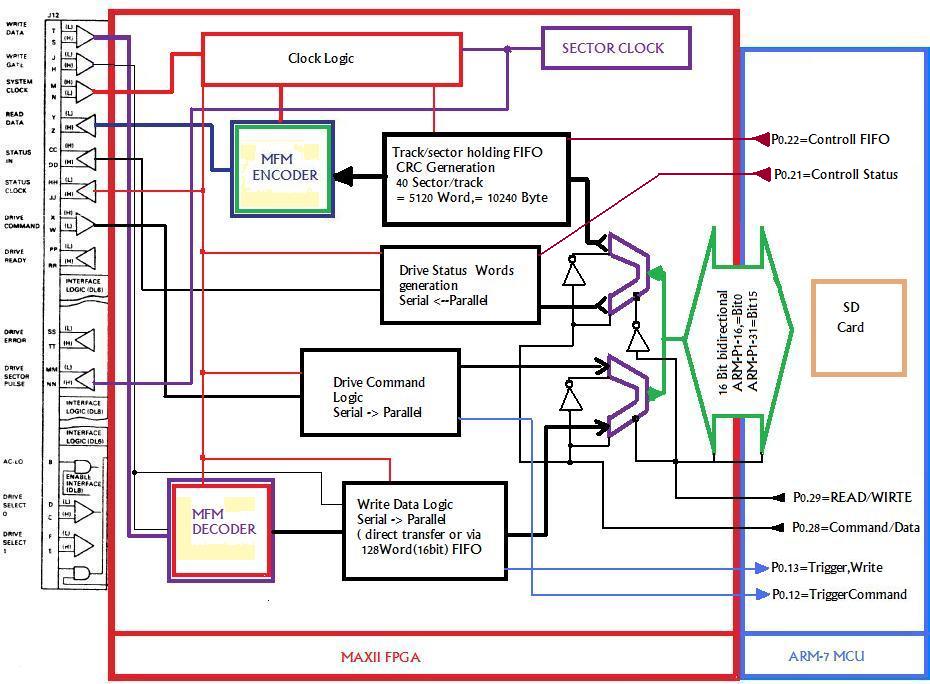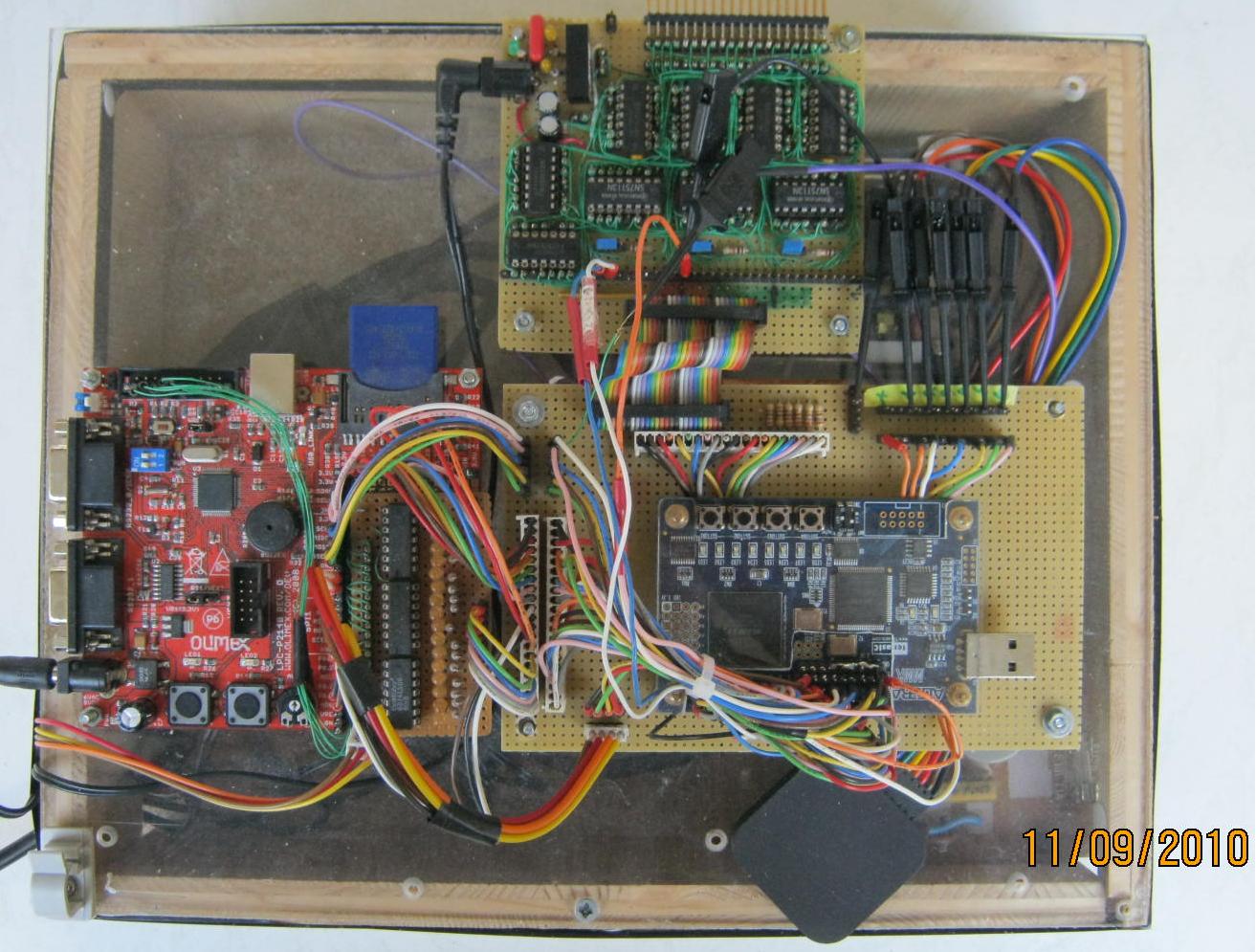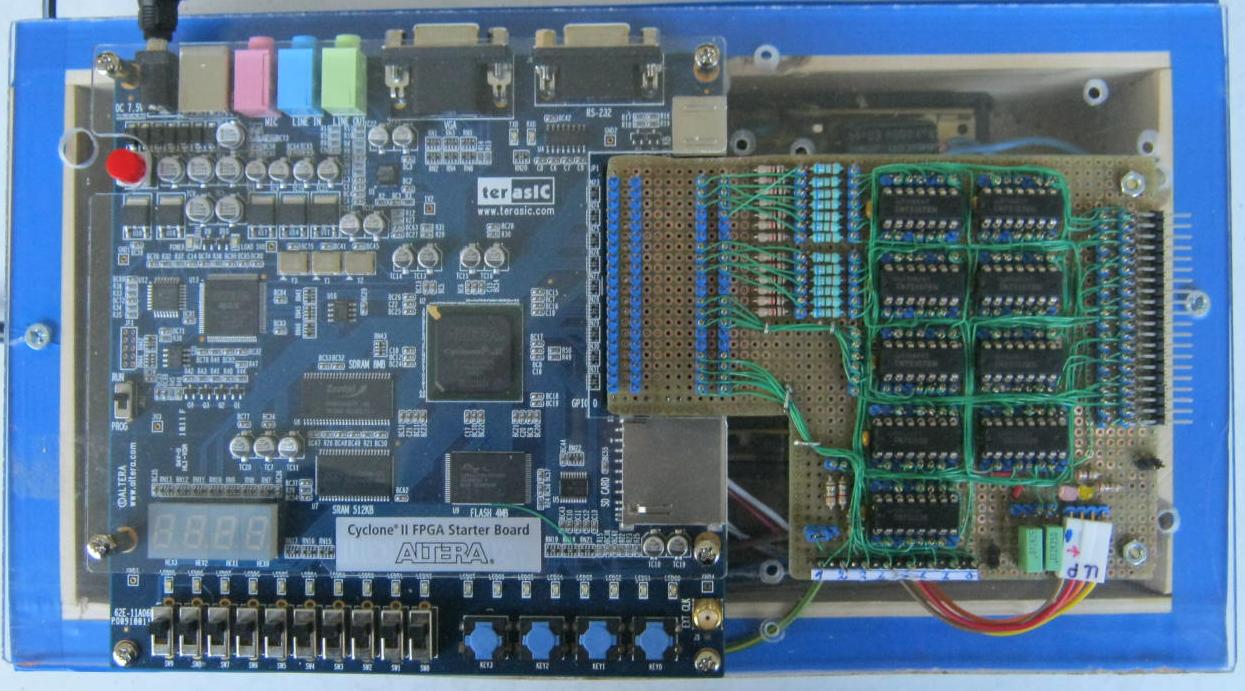My
Environment:
For
programming the development environment from chapter 1.3. I use a
laptop computer with serial interface running Windows XP on it.
The serial interface (COM1) is connected to RS232-0 of the
LPC-P2148
Development
Board and is used to download the HEX images. An additional 4-port
USB HUB is also necessary One port is connected via USB/serial
converter to the console of the Micro-PDP-11. Another port is
connected via USB/serial converter to RS232-1 of the LPC-P2148
Development
Board. The remaining 2 USB ports are connected to the
MAXII-Micro-Kit-Board
and
the QL200
PIC
MCU Development board. Since my laptop computer has come already
in the years ( but serial interface is available ) , I use my
Quad-Core PC to run the Quartus II 9.1 web edition software to
reduce the compile time. My laptop is connected via network-drive
to my Quad-Core PC and is used only for flashing the FPGA in this
case.
Software:
My complete software environment for programming the ARM-7 MCU is “Free software“ based, on the GNU compiler Collection (GCC) area. After some tests I installed my laptop computer successfully with the following software in the correct order. Installing first the Dev-C++ Integrated Development environment (IDE). As next one needs the Cygwin environment installed to be able to work with Unix Commandos under Windows. We still need the arm-none-eabi-gcc C-compiler now to program the ARM-7 MCU. Unfortunately, no make-utility is in the Cygwin package included . I use the mingw32 utility, which runs without any problems.. The Flash-Tool from Philips should be version 2.2.3 to support for LPC-P2148 board (Flash-Utility-Doku ).
The Quartus II 9.1 Web Edition Software from ALTERA is necessary to program the MAXII-Micro-Kit-Board . The new version 9.1 has to be obtained without problems of the ALTERA online update service. This version runs without any problems on my Windows-Vista 64Bit system.
Block diagram:


